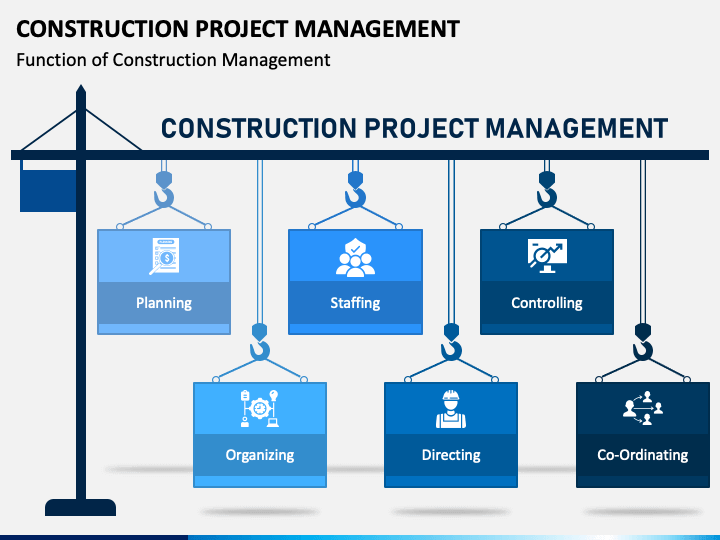Revolutionizing Construction in Pakistan: The Strategic Impact of Project Management Software

Pakistan's construction sector has traditionally been labor-intensive and paper-driven, with managers relying on manual logs, spreadsheets, and verbal updates to oversee projects. But with increasing competition, larger project scopes, and tighter delivery timelines, this old-fashioned approach is showing its age.
Enter Construction Project Management Software in Pakistan—a digital solution designed to handle the complexity of modern construction projects. As Pakistan’s urban landscape evolves and infrastructure investments increase, this software is becoming a vital asset for companies looking to stay ahead of the curve.
The Core Purpose of Construction Project Management Software
Construction Project Management Software helps streamline and integrate various elements of a construction project. These platforms typically provide:
-
Centralized project planning and scheduling
-
Real-time site reporting and analytics
-
Budget control and financial forecasting
-
Resource management for labor, materials, and machinery
-
Quality assurance and compliance documentation
-
Document sharing and communication tools for teams
Instead of using separate systems or relying on manual communication, CPMS provides a single interface where all stakeholders—from architects to foremen—can collaborate efficiently.
The Case for CPMS in Pakistan: Why Now?
Pakistan is experiencing a construction boom, spurred by government infrastructure spending, real estate growth, and foreign investments under projects like the China-Pakistan Economic Corridor (CPEC). However, with larger projects come greater risks—delays, cost overruns, and communication breakdowns are now more common than ever.
Key Drivers of CPMS Adoption:
-
Project Complexity: Managing multi-location teams, contractors, and supply chains requires sophisticated coordination.
-
Regulatory Demands: Public and private projects now require transparent tracking, compliance reporting, and audits.
-
Time Sensitivity: Real estate developers and investors demand on-time delivery to maintain profitability and reputation.
-
Digital Transformation Pressure: Firms across industries are modernizing operations, and construction can’t afford to fall behind.
How CPMS Solves Common Construction Challenges
| Challenge | How CPMS Helps |
|---|---|
| Missed deadlines | Real-time progress tracking and automated alerts |
| Budget overruns | Expense monitoring and predictive cost analysis |
| Disconnected teams | Cloud-based collaboration and file sharing |
| Documentation loss | Centralized digital storage and version control |
| Poor resource management | Labor scheduling and inventory control tools |
| Regulatory non-compliance | Built-in reporting and audit trails |
By addressing these issues, CPMS helps companies reduce project risks, improve efficiency, and boost profitability.
CPMS Options for Pakistani Construction Firms
International Platforms
-
Procore – Offers comprehensive project lifecycle tools; ideal for large-scale firms.
-
Buildertrend – Designed for residential builders; strong client communication tools.
-
PlanGrid – Focuses on document control and site collaboration; good for mid-size firms.
Pakistan-Specific Platforms
-
BuildPakistan – Local interface, bilingual support, and compliance tracking for local regulations.
-
ConstructionERP.pk – Offers modules for finance, HR, procurement, and contractor management.
-
ConstructNow.pk – A cloud-native solution aimed at small and medium contractors with mobile-first access.
These local platforms are often more affordable and customized to the workflows and regulations unique to Pakistan’s market.
Industries and Use Cases in Pakistan
1. Government Infrastructure Projects
From highways to water treatment plants, government contractors are increasingly using CPMS to maintain documentation and meet audit requirements, especially in federally monitored initiatives.
2. Real Estate and Private Development
Developers in Lahore, Karachi, and Islamabad use CPMS to manage apartment towers, gated communities, and commercial buildings, ensuring milestones are met and investors are kept informed.
3. Industrial Construction
Factories and logistics hubs benefit from software that coordinates between civil works, MEP installations, and supplier deliveries in one unified dashboard.
Challenges to Adoption in Pakistan
Digital Readiness
Many construction workers and site managers lack the digital literacy required to use software effectively, making training a critical need.
Connectivity Barriers
Remote sites may not have stable internet, which makes offline capability a crucial feature for any CPMS solution targeting the Pakistani market.
Initial Investment
Cost-conscious firms, especially small contractors, are hesitant to adopt new software without guaranteed ROI.
Organizational Resistance
Change management is difficult—firms with deeply entrenched manual processes are slow to transition without top-level buy-in.
The Future of Construction Tech in Pakistan
Construction in Pakistan is moving into a more sophisticated phase. The next wave of CPMS innovation is expected to include:
-
AI-based predictive analytics to identify risks and delays
-
Drone and IoT integration for real-time site data
-
Blockchain smart contracts to automate approvals and payments
-
Cloud-based mobile platforms for real-time updates from the field
-
Government-backed digital compliance platforms for public-sector transparency
As technology becomes more accessible, CPMS will shift from being a luxury to an operational necessity.
Conclusion: Digitizing the Foundation of Pakistan’s Construction Future
The construction sector in Pakistan is no longer just about bricks and concrete—it's about data, coordination, and control. Construction Project Management Software provides the tools modern builders need to handle increasing complexity and competition.
Whether you're a contractor managing highway projects or a developer building smart homes, investing in CPMS isn’t just a tech upgrade—it’s a strategic decision that leads to better performance, greater transparency, and long-term sustainability.
- Art
- Causes
- Crafts
- Dance
- Drinks
- Film
- Fitness
- Food
- Games
- Gardening
- Health
- Home
- Literature
- Music
- Networking
- Other
- Party
- Religion
- Shopping
- Sports
- Theater
- Wellness


